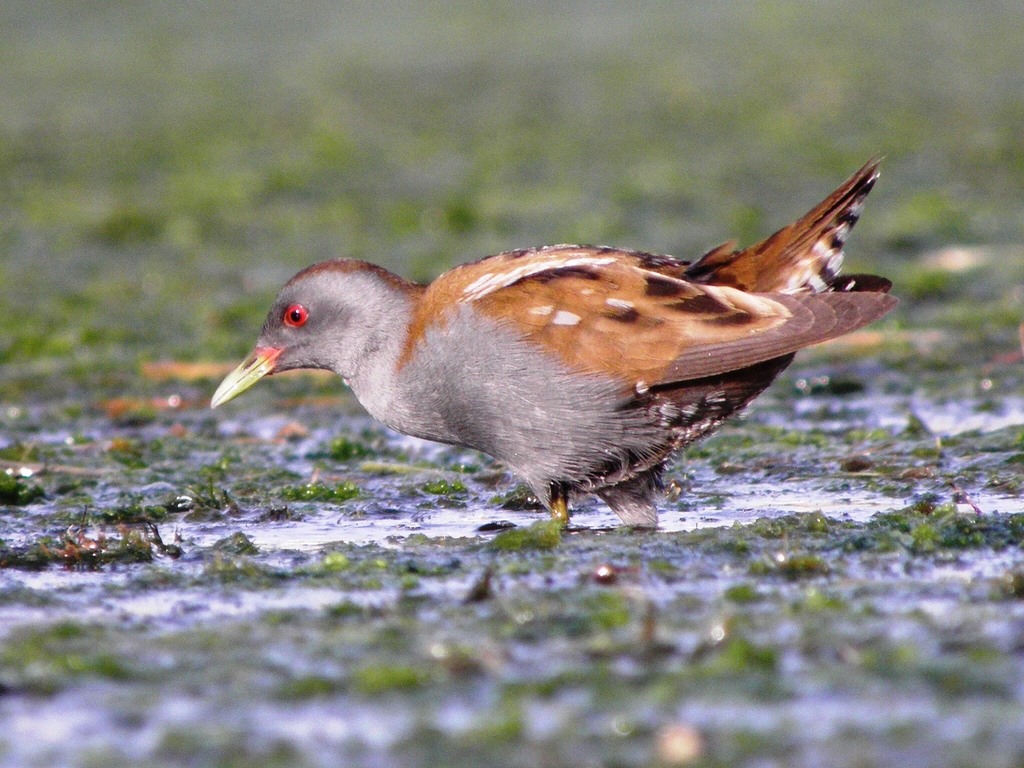Little Crake (Porzana parva)
Measurements: 22-24cm long.
This small rail has the distinction of having separate male and female plumages, one of the few members of its worldwide family to do so. The reason for this quirk is not yet known. The two sexes also have different voices (in common with most other rails) – the male a loud “quack” which repeats for several minutes before ending in a flourish, and the female a short trill preceded by shriller version of the male’s call.

Male Little Crake. By ΝΙΚΟΣ ΣΑΜΑΡΙΤΑΚΗΣ from CHANIA, GREECE – Porzana parva (50), CC BY 2.0, https://commons.wikimedia.org/w/index.php?curid=17764549
The Little Crake’s niche, as distinct from other similar species in Europe, is in tall stands of dense vegetation growing in quite deep water. Such vegetation can include reedbeds, or growth of bulrush (Typha) and various types of sedge (Carex). Suitable habitat sometimes occurs in flooded woodland. The Little Crake can climb stems and use bent or broken sections of plants as walkways to get around, and also regularly wanders over floating vegetation, but it freely enters the water, too. It can feed while swimming, and apparently also dives, so it is much more aquatic than the Spotted Crake or the Baillon’s Crake. Its main foods are insects and their larvae, but it does take a variety of animal and plant food as well.

Female Little Crake. By Porzana_parva_Vlaskop.jpg: Martien Brand from Mariënberg, The Netherlandsderivative work: Bogbumper (talk) – Porzana_parva_Vlaskop.jpg, CC BY 2.0, https://commons.wikimedia.org/w/index.php?curid=10679385
Little Crakes are territorial, but being small species, can obtain their food within a relatively small area. In optimal habitat, nests can be only 30-35m apart from each other. Both sexes build a shallow cup of nearby vegetation, often placing it in a tussock above the water surface.
